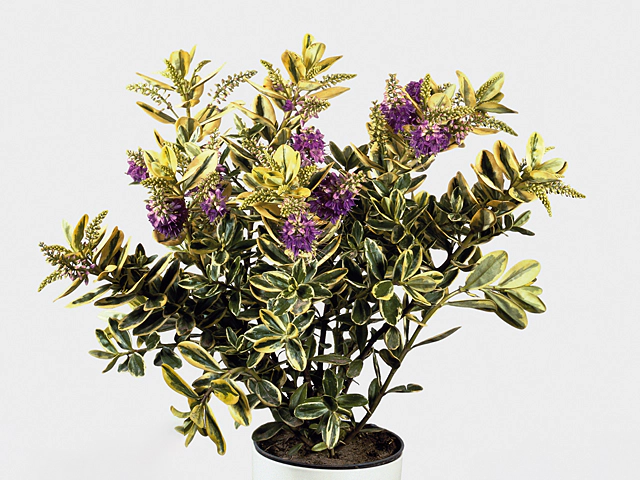Hebe 'Andersonii Variegata'

| Soil type | Humus rich |
Hebe 'Andersonii Variegata' is a stunning variety of Hebe that garden enthusiasts are sure to admire. Known for its variegated foliage, this plant adds a burst of color and texture to any landscape. One factor to consider when growing Hebe 'Andersonii Variegata' is the soil type. This particular Hebe thrives in humus-rich soil, making it essential to provide the right conditions for optimal growth.
Humus-rich soil is characterized by its high organic matter content. It is made up of partially decomposed plant and animal materials, such as leaves, compost, and decaying roots. This type of soil is highly fertile and crumbly, offering excellent moisture retention and drainage. These qualities are vital for the overall health and development of Hebe 'Andersonii Variegata.'
When planting Hebe 'Andersonii Variegata,' it is essential to prepare the soil properly. Begin by removing any weeds or debris from the planting area. Loosen the soil with a garden fork or shovel, breaking up any clumps and creating a loose and friable texture. This will allow the roots to establish and penetrate easily through the soil.
Next, incorporate organic matter into the soil to boost its humus content. This can be done by adding well-rotted compost, leaf mold, or aged manure. Mix the organic matter thoroughly with the existing soil, ensuring an even distribution. The addition of organic matter not only improves the soil's fertility but also enhances its water-holding capacity and encourages beneficial soil microorganisms.
Before planting Hebe 'Andersonii Variegata,' it is advisable to perform a soil test to assess its pH level and nutrient content. Hebes generally prefer slightly acidic to neutral soil, with a pH range of 5.5 to 7.0. Based on the soil test results, amendments like lime or sulfur can be added to adjust the pH accordingly. Furthermore, if the soil lacks essential nutrients, organic fertilizers or specific mineral amendments can be incorporated to fulfill the plant's requirements.
Once the soil has been adequately prepared, dig a hole that is slightly larger than the root ball of the Hebe 'Andersonii Variegata' plant. Gently place the plant in the hole and backfill it with the amended soil. Firmly press the soil around the roots, but avoid compacting it too tightly. Finally, water the plant thoroughly to settle the soil and remove any air pockets.
To maintain optimal growth and health, it is essential to provide adequate moisture for Hebe 'Andersonii Variegata.' While this plant can withstand relatively dry conditions, regular watering during hot and dry periods will help it thrive. Mulching around the base of the plant with organic materials, such as wood chips or straw, can help retain moisture and suppress weed growth.
In conclusion, Hebe 'Andersonii Variegata' is a remarkable plant that deserves a place in any garden. Its variegated foliage adds aesthetic appeal, and with the right soil conditions, it can flourish to its fullest potential. By providing humus-rich soil, gardeners can create the ideal environment for this Hebe variety to thrive. So get your hands dirty and sow the seeds of a beautiful garden with Hebe 'Andersonii Variegata'!
Market availability index by month:
| Jan. | Feb. | Mar. | Apr. | May | Jun. | Jul. | Aug. | Sep. | Oct. | Nov. | Dec. |
|---|---|---|---|---|---|---|---|---|---|---|---|
| 1 | 1 | 1 | 1 | 1 | 1 | 1 | 3 | 4 | 3 | 2 | 1 |